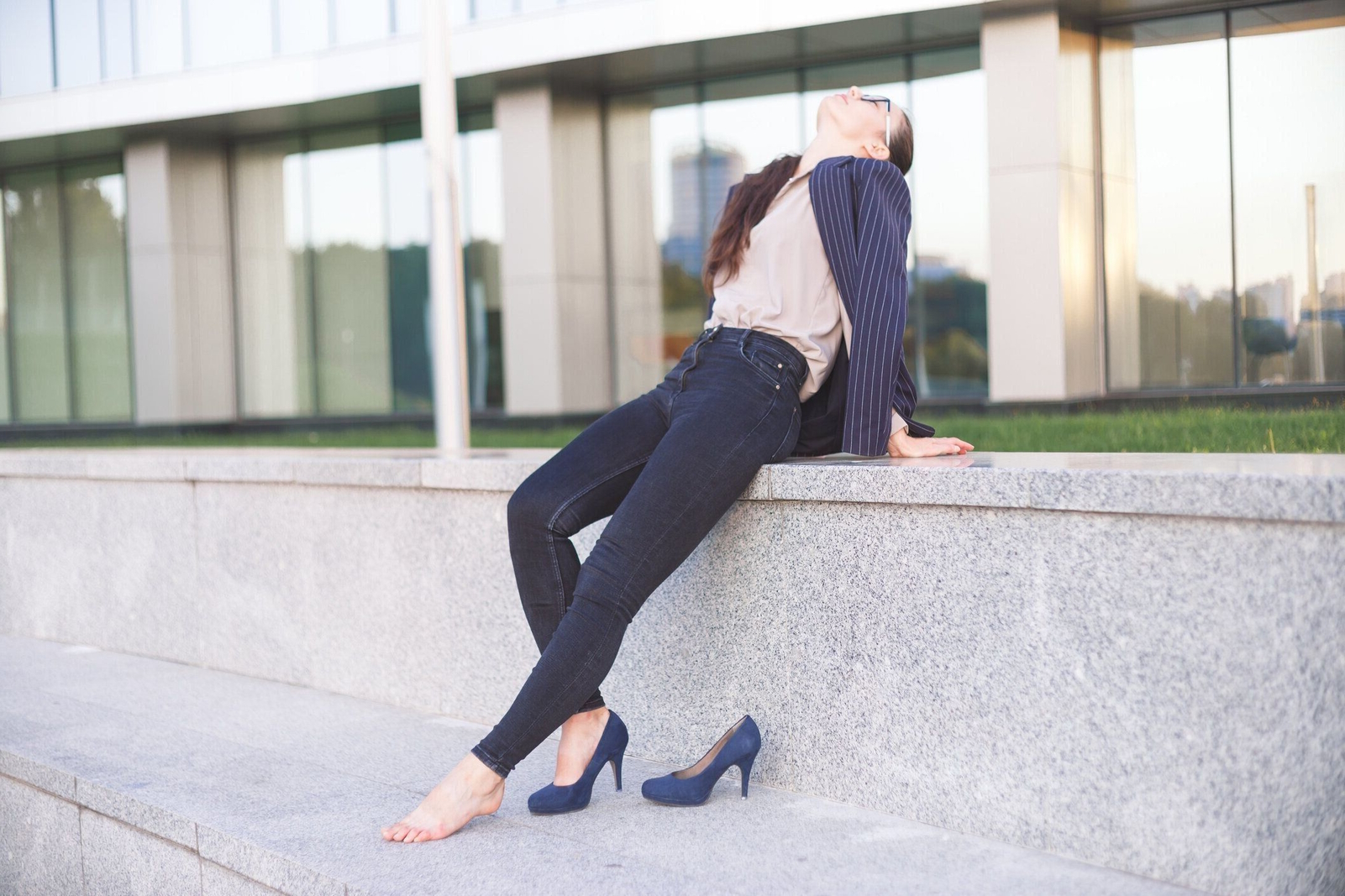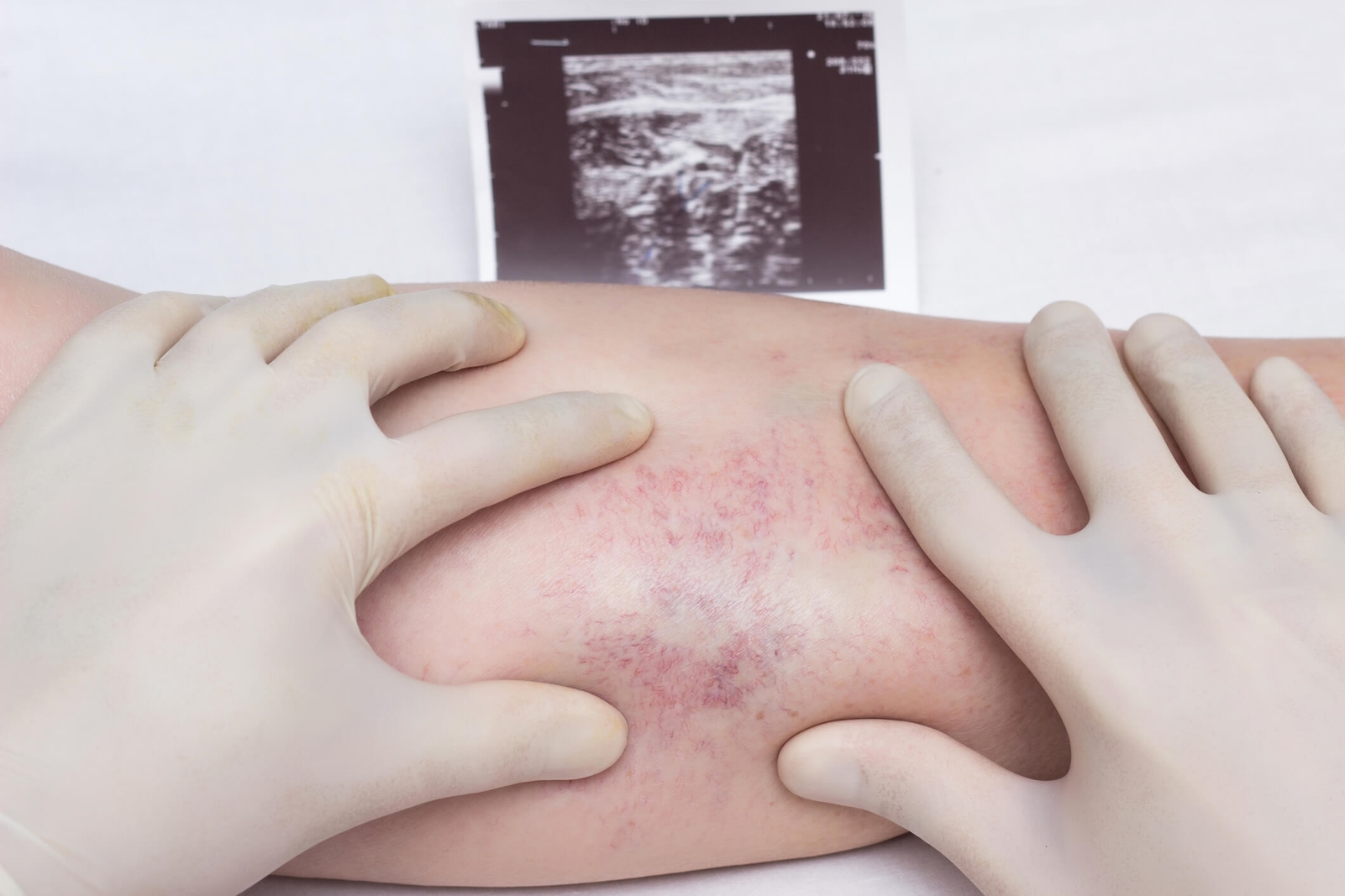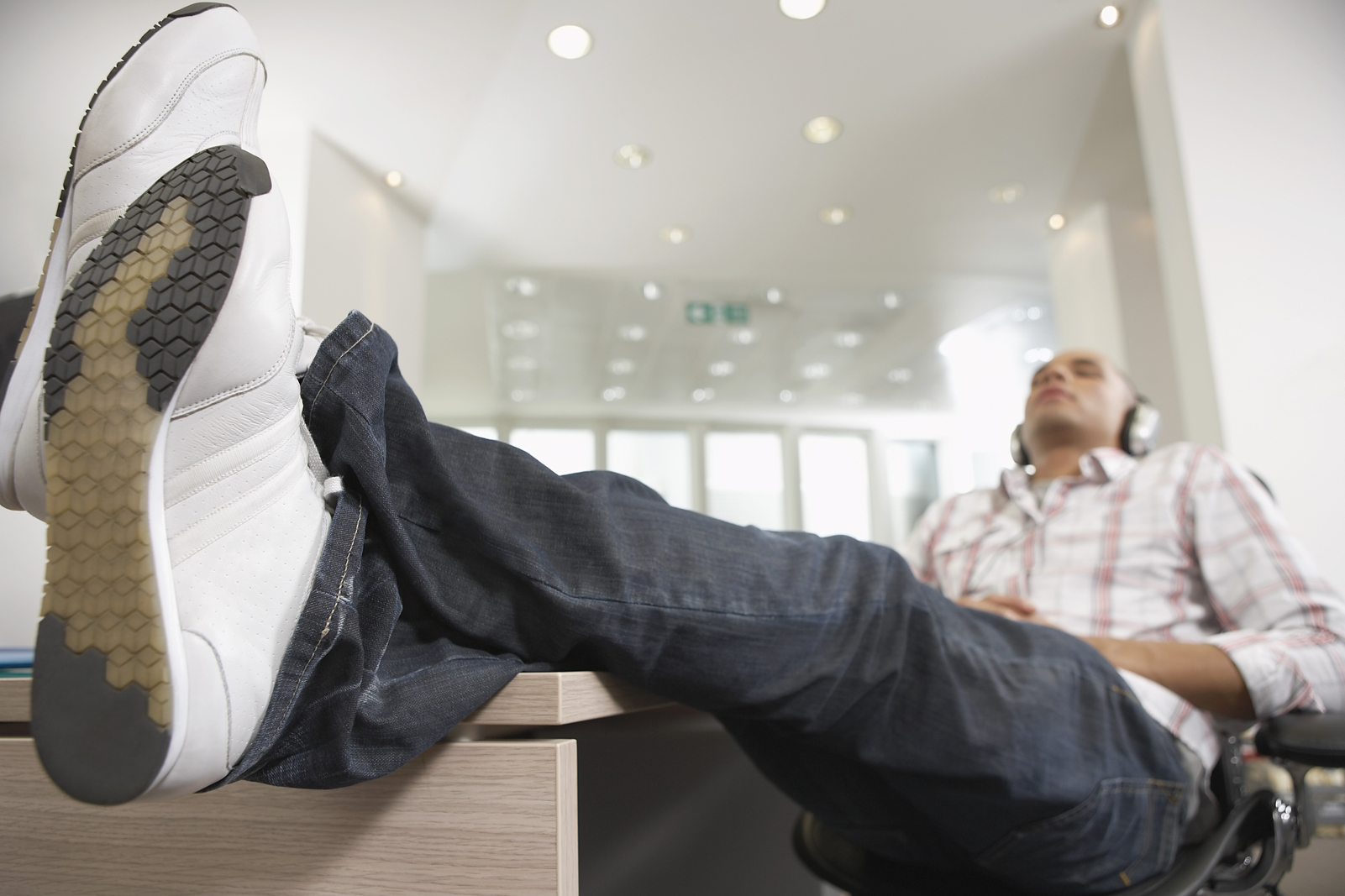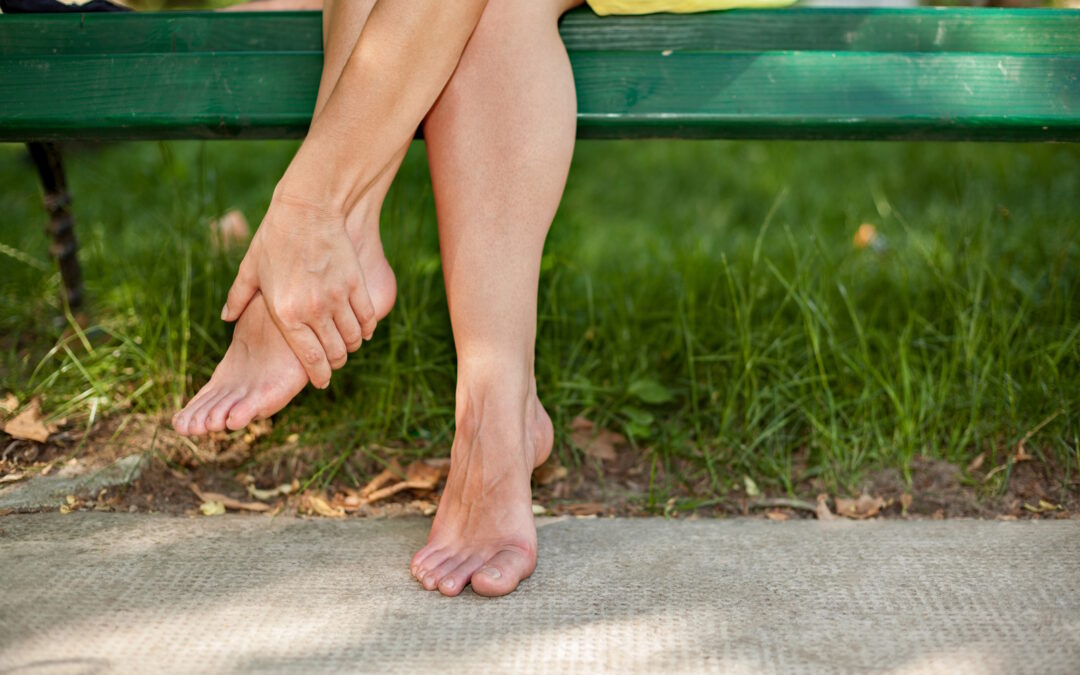Stan* always saw himself as an active person throughout childhood and his early adult life. He went on to play college baseball and even ran competitively in a few half-marathons every offseason. Then there were vacations with friends and eventually his wife, which always involved hiking or another fun activity. That was years ago. After having kids, a new job that requires him to be on his feet a lot, and a horrible car accident that took several months to recover from, he can’t help but feel like a shell of his former self. He would love to be active again now that the kids are older, but his tired legs and feet keep slowing him down. In many ways, it feels like his legs are weighted down, sluggish, and even weak every time he walks.
Tired legs and feet aren’t always a cause for concern. We all experience them and can usually chalk it up to sitting or standing for too long, too much exercise, or bad shoes. However, if these symptoms are an everyday thing and don’t go away on their own, what you could be experiencing is underlying vein disease and poor blood circulation. If left unchecked, that sluggish feeling of constantly walking around in quicksand could lead to other complications.
Do These Symptoms of Tired Legs and Feet Sound Familiar?
- Legs that are difficult to lift and move forward
- Fatigue, stiffness, and lack of mobility
- Unpleasant sensation of pain and heaviness
- Tingling sensations in the feet
- Muscle cramps
- Swelling
- Numbness
- Painful varicose veins
- Open sores that don’t heal
Is your leg pain keeping you from living your best life? Schedule a consultation with Hamilton Vascular’s expert physicians. Appointment
Your Tired Legs and Feet Could Be Vein Related
Experiencing tired legs and feet is nothing new for many of us. This is especially true for athletes and everyday individuals who are always on their feet. As a result, your once-sprightly legs might feel stuck in slow motion, and your feet feel as if they are begging for mercy—even when simply walking from the couch to the kitchen to grab a glass of water. If you can point to a particular activity or event as the culprit for your tired legs and feet, a little rest should do the trick.

The problem occurs when you can’t point to anything specific, and the sensation of weakness and fatigue won’t go away. This is when you might have to start looking at your vein health. An average of one in every three adults over the age of 45 develops some form of vein disease.
Your veins typically work on a one-way system using a series of strong valves to ensure the traveling blood doesn’t flow back in the opposite direction with gravity. As a result, you feel energetic, healthy, and have pep in your step. But as we age, lead a sedentary life, or fall into unhealthy eating habits, our veins become less efficient at doing this critical job and become narrow and malfunction.
This causes blood to flow forward but also backward in the wrong direction into areas it shouldn’t. Consequently, your legs are uncomfortable when you move, and they even cause problems while you are at rest. You certainly can’t do all the things you used to love, so your life becomes more sedentary than before.
Tired legs and feet that are a direct result of artery and vein disease and weakness can eventually lead to the following:
- Venous Insufficiency — The telltale signs include leg swelling, painful varicose veins, cramps, skin changes such as leg skin discoloration, and open chronic wounds that are difficult to heal on their own.
- Varicose Veins — This is a condition where the veins stop working properly, fill up with blood, and enlarge or swell due to high volume of fluid buildup. Roughly 25 million men and women in the United States have these twisted, ropey, discolored, and bulging veins, and one of the telltale symptoms is—you guessed it—tired legs.
- Peripheral Vascular Disease — When too much plaque builds up on the walls of major blood vessels, arteries become narrower and lead to poor blood flow. Too much restricted blood flow or a complete blockage causes tired legs and feet. PVD or PAD affects 5 million U.S. adults and 113 million people worldwide. Feeling tired legs when walking or standing but better at rest is the most common symptom of PVD.
- Restless Leg Syndrome — You know RLS as pins and needles sensation in your legs. It can also manifest itself as leg tingling, prickling, and pulling sensations. Advanced stages impact a person’s ability to sleep, contributing to an overall feeling of tiredness.
- Vein Thrombosis — Blood clots in one of your veins are extremely worrisome in that you are no longer dealing with occasionally tired legs. You have a serious condition that could lead to further complications if ignored.

Tired legs and feet can be managed and overcome by treating the underlying condition. Request an appointment with Hamilton Vascular’s specialists. Appointment
How Do I Prevent and Ease My Tired Legs and Feet?
When people like Stan are told they have vein disease or poor blood circulation, it can feel like the end of the world—a condition they’ll be forced to live with for the rest of their life that’ll keep them from enjoying the things they love doing the most. But this couldn’t be further from the truth. With proper diagnosis and a quality treatment plan, you don’t have to live with tired legs and feet forever.
You can first try to alleviate the symptoms with a few changes. Here are just a few to consider:
- Move around more — Moving around on the job promotes increased blood flow throughout your body and in the veins in your lower extremities. Even if you’re stuck at work for longer stretches, an easy fix is to get up every 30 minutes and walk around to get blood pumping. You may also find that you’re more productive after short breaks.
- Wear compression socks — Compression socks promote blood circulation and reduce symptoms such as swelling, fatigue, and pain, especially during long work shifts, plane flights, and standing on your feet for a long time.
- Stretch — Stretching is great for improving flexibility, but it also helps improve circulation. Most people don’t think of that as an inherent benefit, especially for their legs, feet, and calves.
- Eat better — Your diet helps maintain blood circulation, cardiovascular health, and the ability to lose weight. Options include vegetables, fruits, and fiber-rich foods.
- Quit smoking — Smoking is the leading cause of preventable disease and death in the United States, including its direct impact on the formation of varicose veins and other venous diseases and complications.
- Get more exercise — The American Heart Association recommends at least 150 minutes per week of moderate-intensity aerobic activity to improve blood flow throughout the body and ease tired legs and feet.
- Elevate your legs — Elevating your legs for 30 minutes at least four times a day uses gravity to your advantage by allowing blood pooling in your legs and feet to drain away.

Hamilton Vascular Can Ease Your Tired Legs and Feet Symptoms
Sometimes, the methods above won’t completely prevent and ease tired legs and feet. If you’re making lifestyle changes but aren’t seeing results, then please consider visiting our team at Hamilton Vascular. We diagnose and treat using innovative, minimally invasive procedures with small incisions, less pain, and shorter recovery times.
Our specialty team includes vascular surgeons and vein specialists. This helps us stay on the cutting edge of medicine, helping patients avoid traditionally long invasive surgeries used in the past to treat vascular disease.
Patients suffering from a multitude of vascular conditions that include venous insufficiency, varicose veins, spider veins, diabetic vascular disease, venous ulcers, peripheral artery disease, leg discoloration, lymphedema, restless legs syndrome, and more can benefit from these minimally invasive treatments. Procedures take place at in-office or outpatient settings.
If your veins need treatment—or you have questions on how to avoid the onset of venous disease—the experts at Hamilton will recommend an individualized plan to help you get the best results. Request an appointment for a vein disease evaluation to discuss your options.
Please contact us at 866-552-4866 or complete the appointment form to schedule a consultation.
AppointmentHamilton Vascular serves the South Texas area including Houston, San Antonio, Austin, Round Rock, Bastrop, Brushy Creek, Cedar Park, Converse, Georgetown, Hutto, Kyle, Leander, Marble Falls, New Braunfels, Pasadena, Pearland, Pflugerville, San Marcos, Schertz, Houston, Sugar Land, Katy, Webster, Bay City, Clear Lake, Lake Jackson, The Woodlands, Universal City, Spring, Kingwood, Stafford, Conroe, Texas City, Cypress, League City, Bellaire, and more.
Prior to starting any new treatment or questions regarding a medical condition, always seek the advice of your doctor or other qualified health provider. This information is not a substitute for professional medical advice.
*Patient stories are true. Names and/or photos may be changed to protect patient confidentiality.

